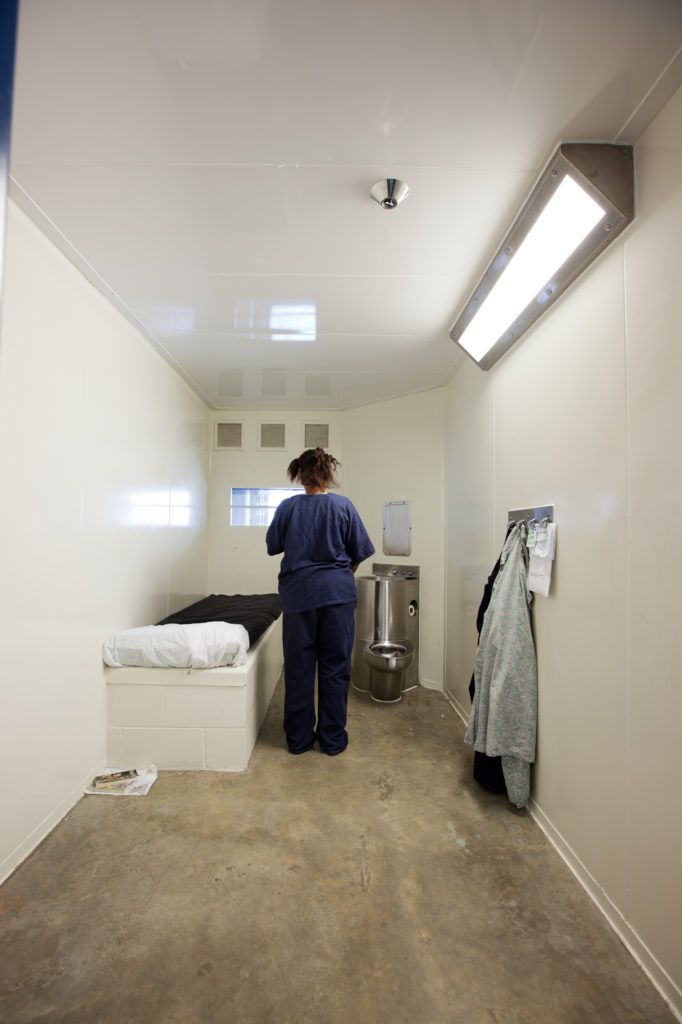
I’ve been here for two weeks, and this is my third time in. I’m in the sixth grade. I was in placement but I ran away. They accused me of assault against my mom, but she scratched herself and said I did it. My dad lives in Atlanta and works in a barbershop. -E.Y., age 11 Juvenile Detention Center, Houston, Texas.
For the past forty years, the planet has been engaged in a global prison lockdown and a worldwide prison – building binge, which have resulted in the confinement of more women than ever before. This build up of lockdowns began in the United States in 1973, and has since blossomed, or mushroomed, into a global frenzy of incarceration of working class women of color and indigenous women.
The hyper-incarceration of women affects children, especially in those communities in which single women predominate as heads of households. The assault on children is more direct, however. At the same time that women, especially working class women of color and indigenous women, are being caged, their children are also being locked up as never before.
What is a child? A child is one’s offspring, a child is a minor. A child is a child, and tell me, where do the children live?
Given the prison boom, there are more offspring behind bars than ever before. Typically, the task and labor of maintaining social and sustaining contact is left to mothers, secondarily to female partners. This is the lesson of Mothers Reclaiming Our Children, in California. When children are sent to prison, mothers are launched into a global reclamation and reconstruction project that, for many, never ends.
For example, Diana Montes-Walker’s son is an adult man in his 20s, living with bipolar disorder, complicated, predictably, by alcohol and drug dependencies. Equally predictably, her son `encountered’ the state criminal justice system, in this instance the California system. Ever since her son has been in prison, he has suffered one form or another of solitary confinement. Either he was in solitary in prison, or he was in solitary in so-called medical facilities that are actually prisons for inmates with `special needs’. In the latter, he is in solitary, but, according to his mother, with a little more freedom. He made it into the `better’ solitary confinement because his mother pushed, shoved, organized, shouted, wrote, met incessantly with everyone. And now, Diana Montes-Walker drives back and forth to scheduled meetings with doctors and social workers who don’t appear. And her son stays in solitary, and she has no idea how he’s doing.
Why is this happening to Diana Montes-Walker’s son, and so many others like him, young men and women living with mental disabilities and illnesses of one form or another? Why is he in prison? He is in prison because public mental health budgets have been shredded and then vaporized. Prisons are the new public mental health institutions. Meanwhile, Diana Montes-Walker, inhabits a State-sponsored hell, built because it’s more efficient to have her run around and take care of her son, more efficient and less costly.
Where do our children live? In prison.
In Turkey, close to 500 children live in prison with their mothers, who have been convicted. Why are they in prison? “Financial difficulties”. For the children, three to six, there might be a kindergarten. For those under three years old, they spend the entire time in the cell with their mothers. These children are not in prison because of their mothers’ “financial difficulties”. They are in prison because of the moral and ethical bankruptcy of the State and because of the social structures that support that State.
Because of `financial difficulties’, Mississippi’s one juvenile detention center is run by a private corporation, the GEO Group. According to parents of the children being held there, the place is a horror, another State-sponsored hell. Fights break out, and the staff ignores calls for help and protection. Worse, the staff is accused of brutalizing children. Parents gaze upon their wounded and maimed children and feel a pain they describe as torturous. The lawyers describe the prison as barbaric and unconstitutional. The children describe the place as a war zone.
War zone is too nice a phrase for a place in which civilians are butchered for profit. Child prisoners, children’s bodies and lives, bloat the coffers of private industry. They are an extractive resource whose market value continues to grow. Where do the children live? They live, and often die, in prison.

(Photo Credit: Richard Ross, Juvenile In Justice)